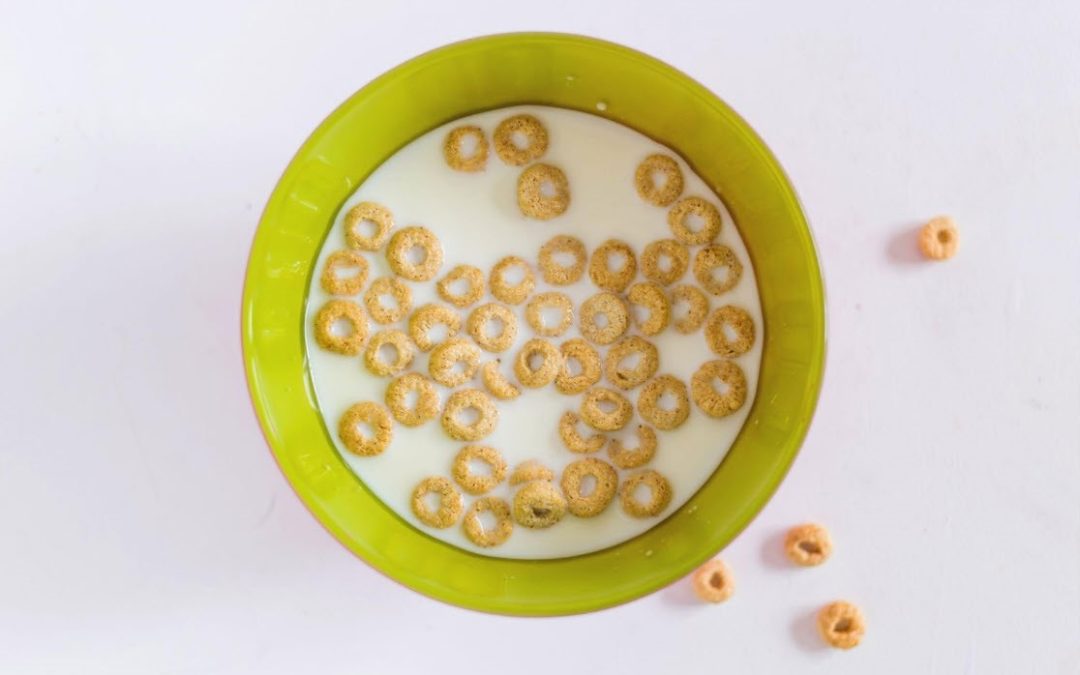Most days, I am a savory-style breakfast person. When I get a hankering for a good breakfast cereal, I typically find myself drawn to relatively bland varieties in that department: Special K, plain Cheerios, Rice Krispies… you know the kinds. But every once in a while, as I meander through the endless grocery store aisles, a box of sugar crusted sweetness catches my eye and breaks me out of my breakfast comfort zone.
Usually, I ignore the urges to buy it; I’ve got plenty of good, healthy breakfasts at home that I know will keep me satisfied. Every now and again, however, I give in. This last week, it was Reese’s Puffs. Deliciously chocolatey and peanut-buttery. Perfection as far as sweet cereals are concerned. I couldn’t wait to dig in.
The next morning before school, I dispensed a two-serving-sized bowl full of the treat, grabbed the milk out of the fridge and poured it in, popped a spoon from the drawer into the bowl, and sat down at the table ready to eat. It looked just as delicious as I remembered. I lifted a spoonful to my mouth, eager to savor each bite.
But as soon as the cereal hit my tongue, I could tell there was a problem. The milk was sour.
Disappointed, I scooped the cereal out of the bowl and into the trash can and tossed a breakfast burrito (a regular breakfast entree in our house) into the microwave instead.
As teachers, we’ve all had lessons turn out like this before. We plan something new and special for our students, something out of the ordinary, and we dedicate ourselves meticulously to the plan. On paper, it looks like the perfect lesson, one we’d love our administrator to come and observe. And on the morning of, we feel the excitement that’s been building inside of us seeping out into the room. This is going to be an excellent lesson that the students will love.
And then it isn’t. Something’s spoiled it.
It would be easy for us to treat this lesson like I did my bowl of Reese’s Puffs. Just toss it in the trash and stick with our regular fare. If we do this, though, we miss out on the same lesson we’re constantly trying to instill in our students: if at first you don’t succeed, try, try, again.
We encourage our students to learn from failure and take risks all the time. Under our own pressures to perform though, we educators don’t always treat failure in the same way. We refrain from taking risks, knowing that test scores and observations may be on the line. Instead, we stick to what we know.
Don’t get me wrong, there are absolutely best practices out there that we should be adhering to, but those best practices don’t need to push us into the box of a status quo classroom. Just like our students are learning new skills, we can push ourselves out of our comfort zones and try new lessons, new experiments, and new teaching methods. Just like our students might fail in their first attempts, so too might we.
And that failed lesson doesn’t mean you’ve failed. It just means one of the ingredients wasn’t quite right. In the same way you mixed the ingredients together the first time through, it only takes a few minutes to evaluate the lesson’s failings. Maybe it was just a bit of spoiled milk.
It can take some courage to jump back in and give the lesson another go.
The morning after my spoiled milk fiasco, I skipped out on the Reese’s Puffs, too afraid to jump back into the bowl even though I had gotten a new jug of milk on my way home the day before. The memory of the spoiled milk was just too much for me to be ready for another spoonful. But the day after, I mustered up the courage. It was, just as memory said it would be, a perfect breakfast.
Don’t be afraid to try that failed lesson a second time. It may become one of your favorite lessons you’ve ever taught.
And if it fails again? Well, there’s still no use crying over a little spoiled milk.




